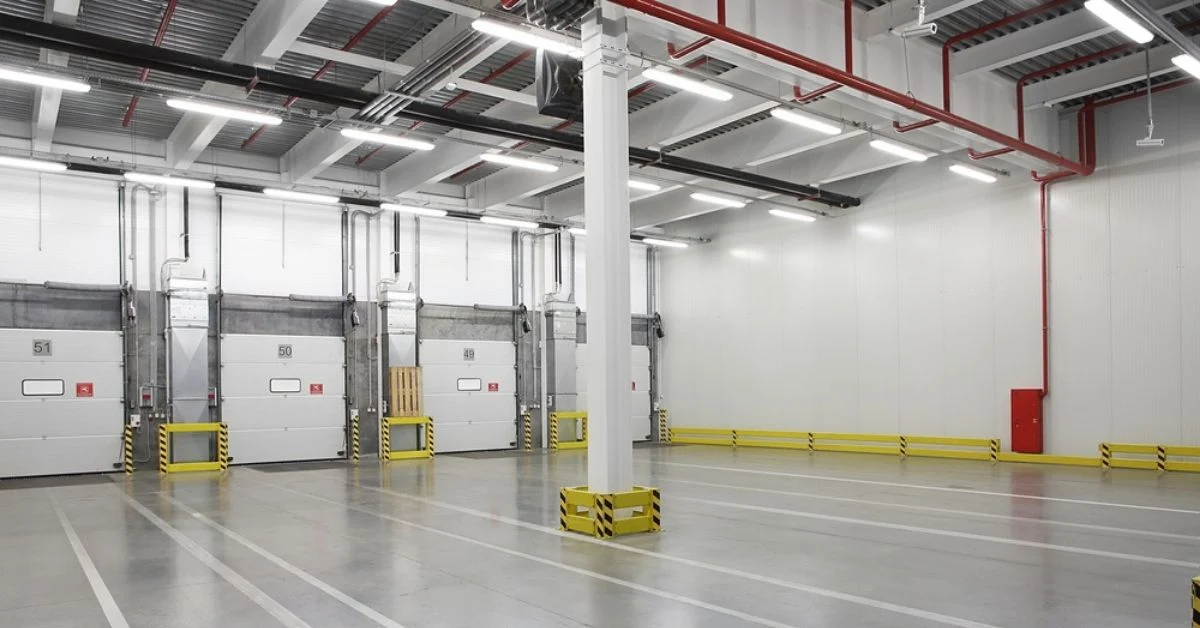Ensuring the thermal insulation of buildings and in particular of cold rooms is as necessary as it is delicate.
Delicate, as it is intended to avoid temperature changes that could harm both products and people. Necessary, as it promotes energy saving and environmental sustainability.
Designing and building in harmony with green issues requires a careful analysis of the best performing technologies on the market. The ones that Isopan offers in combination with Leaf technology are very interesting.
Cold rooms: why they need to be insulated
Keeping cold rooms insulated is important because, by doing so, we avoid the perishability of the products stored in them.
Cold rooms are spaces where it is possible to store products that require low temperatures to avoid deterioration.
Cold rooms favour the creation of an environment with controlled temperature and atmosphere, where products can be stored for a long time, without them undergoing alteration processes caused by heat or high humidity.
Cold rooms can have a fixed or mobile structure and are divided into two categories:
- Positive temperature cold rooms: these ensure the creation of an environment at a temperature between 0°C and 18°C for the storage of fresh food products. They guarantee constant temperatures and low humidity levels;
- Cold rooms at negative temperature: as such, we mean those where the thermometer indicates a temperature ranging between 0°C and - 28°C. They are used for the storage of frozen and deep-frozen products. They are usually commonly used not only in the agri-food and pharmaceutical fields, but also in the chemical sector.
Cold rooms, what are the best techniques and materials
Cold rooms are essential in ensuring the cold chain.
This mission is already taken into consideration in the design and construction stage.
Choosing the most suitable techniques and the most reliable materials in the construction of a cold room means guaranteeing the best thermal insulation.
There is a wide variety of insulating panels suitable for facilitating the achievement and maintenance of the temperature required for the preservation of the products to be stored in a cold room.
Isopan offers designers and builders the range of Sandwich Panels (given this name because they have a three-layer structure) Isofrozen and Isofrozen HT.
They are characterised by being insulated with polyurethane or polyisocyanurate foams.
The panels provide high performance both in terms of temperature maintenance and reaction to fire.
In addition to their excellent technical performance, Isopan panels are accompanied by the guarantee of maintaining an excellent level of hygiene, thanks to surfaces that are easily washable and unsuitable for the proliferation of fungi and mildew.
Characteristics of the Isofrozen panel
The Isofrozen panel’s features distinguish it from the others in the Isofrigo range.
Available in the Isofrozen and Isofrozen HT versions, this type of sandwich panel is suitable for the construction of infill walls, internal partitions and false ceilings of industrial or civil buildings.
Available in three configurations (standard, with intumescent seals and with thixotropic sealant), the Isofrozen panel has the following characteristics:
- Aluminium, pre-painted galvanised steel or stainless steel cladding;
- Polyurethane insulation;
- Possibility of horizontal or vertical installation;
- Pre-painting available in various colours.
In terms of measurements, the Isofrozen panel stands out for the specific features stated below:
- Useful Pitch (mm): 1000 - 1150;
- Insulating thickness (mm): 80, 100, 120 (in the Isofrozen version); 120, 150, 200 (in the Isofrozen HT version);
- Internal and external support: slatted micro-corrugated metal profile.
As the result of advanced studies and research aimed at technical innovation, Isofrozen panels also stand out for the use of Leaf technology, which guarantees their low impact on the ecosystem.
What is Leaf technology
Leaf was developed from Isopan's desire to combine efficiency in construction with environmental sustainability.
Isopan created the Leaf solution, with which it developed an innovation capable of ensuring excellent thermal insulation with low environmental impact.
This is a brand new solution which, in particular, concerns the capacities of the insulating material of Isofrozen panels
By reducing the thermal conductivity value of the polyurethane foam, Leaf makes it possible to obtain, at the same thickness, 20% less heat losses than with panels usually available on the market
If you are interested in learning more about this topic, read the article: “HOW TO APPLY LEAF PANELS TO YOUR BUILDING”
Efficiency, safety and sustainability of the Leaf solution
Leaf is interesting in terms of:
- Efficiency: guaranteeing lower thermal conductivity, Leaf technology will also make it possible to have thinner, lighter and even better insulating panels, thus facilitating the reduction of consumption and maintenance costs;
- Safety: Isopan panels designed with Leaf technology have passed the strict quality tests required to obtain European B-s1d0 certification, certifying the best reaction to fire of the sandwich panels;
- Sustainability: Leaf contributes to the reduction of CO2 emissions during the production process. Additionally, the use of Halogen free FR (Flame Retardant) Technology avoids the generation of halogenates, which are potentially harmful if released into the atmosphere.
Leaf and protecting the environment
Choosing Isopan Sandwich Panels with Leaf technology means caring for the environment.
This is because Leaf contributes to obtaining credits relative to the LEED and BREEAM European certifications, fundamental in the field of eco-sustainable construction.
The first in Europe to have the Declare label, the Leaf solution allows you to build credits for the aforementioned certifications, which is obtained through the pre-existence of certain requirements related to both the project and construction.
Some tidbits of information will help you understand better:
- BREEAM certification (Building Research Establishment Environmental Assessment Method) concerns buildings intended for non-residential use. It measures environmental sustainability in relation to various parameters (e.g. land use, waste management, use of energy and water) which applies to both the design and construction phases.
- LEED certification (Leadership in Energy and Environmental Design) relating to both residential and commercial construction Also in this case, certification is obtained by fulfilling the aforementioned eco-sustainability prerequisites, which must apply through from the design to the construction of the product.
Low impact on the ecosystem and maximum benefit in terms of thermal insulation: choosing an Isofrozen panel means creating a winning, solid and environmentally friendly building project.


